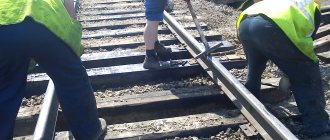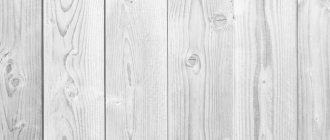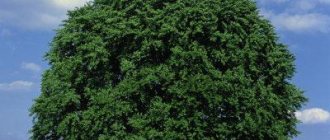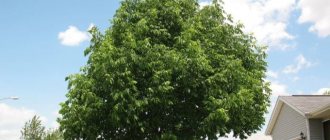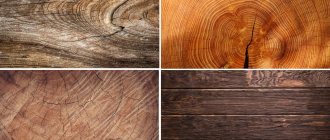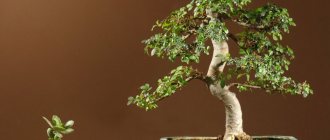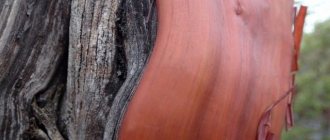During the manufacturing process, the supporting elements of access and main roads are necessarily coated with special antiseptics. We propose to consider what wooden railway sleepers are impregnated with, why they do it, what kind of technology is used, what performance characteristics are achieved.
What is used to impregnate wooden railway sleepers?
This is a protective measure aimed at maintaining the strength of loaded sections of the track, protection from rot and insects. Special chemical compounds are used. To process wood, special equipment is required. Let's talk about this in the article.
It gives maximum results if the compositions chosen for it are:
- absorb well and evenly;
- create an unfavorable environment for the development of bacteria;
- when used correctly, they remain safe for people, animals, and the environment;
- are distinguished by their durability and immutability of antiseptic properties;
- non-volatile, do not leach even under prolonged exposure to water.
Also, any protective substance must be absorbed within the planned norm (for economy) and have a sufficient depth of penetration into the material.
Let us immediately note that load-bearing structures made of larch, pine, spruce, and birch have a number of practical advantages that determine the breadth of their application. So, they are cheaper than reinforced concrete and weigh less, they are easier to transport and lay. They also have natural flexibility, do not conduct electricity, do not collapse even after numerous freeze-thaw cycles, and adhere perfectly to the ballast layer.
In a word, they are relevant and we will tell you about them in detail.
About fire safety
According to experts, sleepers impregnated with creosote pose a danger not only to the health of residents, but also to their lives. The fact is that wood after treatment with this antiseptic becomes highly flammable. In the event of a fire, such a house will burn down in less than half an hour. Considering this fact and the harmfulness of creosote, since 2003 in European countries it has been prohibited to build houses for civilians from this building material. Our situation is the opposite, and therefore many are wondering how to remove the smell of sleepers? More on this below.
Why is wood processed?
The supporting elements of the track must withstand strong vibrations and loads from trains, exposure to atmospheric phenomena, and soil movements for many years. Therefore, their durability is increased by covering them with protective substances and making the natural material more resistant to the influence of negative external factors.
Impregnation compositions
Let's take a closer look at what sleepers are covered with today. There are 3 modern chemical industry products in use, each with its own advantages.
Creosote (coal oil)
This is what they impregnated sleepers in the USSR - the impregnation is obsolete and, most importantly, toxic. It has been actively used since the 50s of the 20th century. It is a product of distillation of a mass of coal with tar, resulting in a phenolic ether. They were actively looking for an alternative (and found it - in the form of the following two substances). Among its advantages:
- preventing the destruction of natural material;
- long-established application technology;
- effectiveness proven in the long term;
- affordable price.
Changes the color of the supporting element (it becomes darker) and emits a pungent odor, somewhat reminiscent of diesel fuel. The level of toxicity is within the normal range of building standards, but still relatively high, so with the development of the chemical industry, we began to think about what to replace it with, and found the following option.
Elemsept
This is how wooden sleepers are treated. This is an antiseptic composition with concentrated oxides of copper, chromium, and arsenic. In its finished form it is a powder, so before use it must be diluted with water. It is applied using autoclaves according to the following scheme:
- the future VSP support element undergoes vacuum drying;
- all its sides are coated with a protective agent (attention, under pressure);
- the air is pumped out again for a while - to consolidate the result.
As a result, the active substances penetrate the natural material by at least 2 mm, which increases the strength characteristics of the rock and protects it from moisture, fungi and other threats. The effectiveness of Elemsept is higher than creosote, and the toxicity is lower, the surface after it becomes slightly greenish, and does not contain an unpleasant odor.
What should you pay attention to?
Despite the fact that with a vapor barrier, the house should become an airtight structure, unpleasant odors and harmful substances will not penetrate into it, and the wooden walls will stop “breathing.” Therefore, before removing the smell of sleepers from the house, you should worry about quality ventilation. Otherwise, the heat exchange in the room will not be fully carried out, which will lead to the accumulation of moisture. To prevent this, rooms are equipped with adjustable openings for fresh air to enter the home: microventilation devices, vents and windows. Exhaust ducts are required in bathrooms and kitchens. Additional exhaust fans will also help. This will become the basis for creating a favorable climate in the house. Of course, you should not hope that one hundred percent protection against poisons will be achieved. However, if the work is done correctly, the level of penetration of toxic substances into the living space will be minimized as much as possible.
ZhTK
This is what they treat railway sleepers with when they want to prevent the heating wood from emitting carcinogens into the atmosphere during their operation. The abbreviation simply stands for thermocondensation liquid. This is a petroleum product similar to oil, produced using a patented technology. This product is directly supplied to manufacturing plants of VSP elements; it is not publicly available.
Advantages:
- extending the service life of supporting structures to 20 years;
- protection without the formation of a sticky layer on the surface, without clots and compactions - the smoothness of the profile is not disturbed;
- there is no smell, the color of the wood practically does not change (it only becomes a little lighter, which does not worsen the visual impression);
- non-toxic, does not emit harmful substances into the atmosphere, and therefore does not contribute to the occurrence of cancer.
These advantages determine the breadth of use of ZhTK.
So, we have found out what railway sleepers are impregnated with, and now let’s see how exactly (that is, in what sequence) they are processed when released.
Average service life after processing of wooden sleeper supports
This time reaches 15-20 years, and in the absence of damage to the track bed it even exceeds this figure, and this is for all types of supporting structures that can be edged, that is, with cuts on all four sides, semi-edged (only three surfaces) and unedged ( sawn partially or only at opposite ends).
About the processing method
Judging by numerous reviews, some owners of such buildings hardly think about how to remove the smell of sleepers from the house. The reason for this is a special method of wood processing. In the production of sleepers, surface (depth from 0.5 to 1 cm) and through impregnation is provided (through pressure, the antiseptic acts on the entire block). If sleepers that have undergone surface treatment with creosote are used for construction, the house will be provided with fairly good ventilation, and the harm from the antiseptic will be minimal. However, this does not mean that it does not exist at all. When the heat comes, residents will immediately notice an unpleasant odor. Therefore, whether to build a house from sleepers or use other building materials, everyone decides for himself.
Impregnation as a process
The most common method is using an autoclave, that is, a steel cylinder with thick walls, closed at the ends with lids in the shape of hemispheres, and also equipped with shut-off devices, safety valves, sensors and other auxiliary equipment for control and adjustment.
Wood impregnation technology
As written earlier, this is done using coal oil (creosote), Elemsept or ZhTK, alternating cycles of pressure (1) and vacuum (2) according to one of the following schemes:
- 1-1-2 – also relevant for communication poles, power line supports, bridge beams;
- 1-2-1-2 – used in the case of piles and similar structures operated in water (fresh);
- 2-1-2 – for those objects that will be installed at sea.
All common impregnations for wooden sleepers penetrate deep enough to have a positive effect.
The wood impregnation process is presented in Figure 1, later in the text as a sequence of actions, and in the form of a diagram in a table with time in minutes at each stage:
Suitable pine or spruce (with a moisture content of up to 22%) is sawn, delivered to the warehouse, undergoes natural drying, and is checked to ensure compliance with the standards.
The blanks obtained in this way are loaded into the autoclave. Its model with a volume of 70 m3 (length 22 m) is considered productive.
Then they are filled with the selected composition - at a temperature of 100 degrees Celsius, under a pressure of 8 atmospheres. As a result, the depth of penetration of the substance into coniferous wood is 5-8 mm, which is quite enough to achieve the desired properties.
Almost finished products are dried again to remove excess coal oil, Elemsept or thermal condensation liquid and their subsequent disposal.
Manufacturing technology in tabular form
| stage | time, min | |
| 1 | loading | 10 |
| 2 | warming up and creating a primary vacuum | 15 |
| 3 | injection of selected liquid | 3 |
| 4 | breeds in antiseptic (heated or not, depending on its type) | 35 |
| 5 | resetting parameters to normal and pumping out the substance | 7 |
| 6 | provision of secondary vacuum atmosphere | 7 |
| 7 | one more holding | 15 |
| 8 | reset followed by unloading of the autoclave | 13 |
The time of each stage may vary slightly - this is not important, the main thing is that the proposed method fully complies with GOSTs.
Here are the current criteria that must be strictly adhered to:
- 78-2004 - establishes standards for geometry and general quality;
- 2770-74 – makes demands;
- 20022.5-93 – regulates the procedure for application using autoclaves;
- 20022.0-93 – checks the degree of security;
- 20022.14-84 – determines the humidity level.
Impregnated wooden sleepers - technical characteristics
Now we propose to consider their sizes, types, absorption capacity and other specific technical parameters. At the same time, remember that in terms of geometry and quality they must comply with GOST 78-2004, and in terms of manufacturing technology - 20022.5-93, while the requirements of the interstate standard 2770-74 are imposed on the antiseptic itself.
Impregnated sleeper supports - types
In addition to species (cedar, spruce, pine, oak and even birch), they are also divided by type of use:
- I – on main roads;
- II – on access and station lines.
Dimensions
We can most clearly present the dimensions of the supporting structures using the table.
| type | volume | length | width | thickness |
| m³ | mm | |||
| i | 0,1237 | 2750 | 250 | 180 |
| ii | 0,1012 | 2750 | 230 | 160 |
Protection parameters during conservation
It is necessary that they fully meet the requirements of GOST 20022.0.93 and 20022.14-84. According to them, the preliminary moisture content of coniferous species must not exceed 25% (in practice it is limited to 22%). Then the finished product can be used for the stated period of time.
Impregnation and absorption standards
It is important not only what the sleepers are coated with, but also how the selected composition should penetrate the material. The standards are listed in the table below.
| type of wood | depth | absorption | ||
| along the sapwood, mm | by ripe (spring), mm | minimum | planned | |
| pine/cedar | from 5 | 79 | 96 | |
| spruce/fir | from 5 | from 2 | 90 | 105 |
| birch | – | – | 170 | |
If you exceed the recommended values or fail to maintain them, this will have a very negative impact on the service life of the supporting structures.
Average service life
Having undergone the necessary protection from bacteria and insects, the finished elements can be used for up to 15-20 years (depending on how the canvas is loaded, as well as on the severity of climatic conditions).
The period of operation could be longer if not for the complex influence of negative biological factors. Yes, the material can be protected from fungi and bark beetles, but there is also precipitation that turns into destructive water on the canvas, as well as seasonal changes in freezing and thawing.
What ideal impregnated wooden sleepers look like
In general they are:
- color ranging from light to dark brown (depending on both the composition used and the coniferous species);
- not sticky to the touch and without a pungent odor (sometimes with a perceptible aroma);
- ideal geometry - parallelepiped in shape - with surfaces without chips, cracks, bulges and other deformations.
Achieving such characteristics is only possible if the basic rules for applying protective substances are followed. In particular, coal oil and fatty acids cannot be mixed - they are only effective separately. And it’s the same story with other similar liquids.
About the disadvantages
The question of how to remove the smell of creosote in the house, according to experts, is quite important. This is due to the fact that the antiseptic is very harmful to human health. After a long stay in a sleeper house, various liver diseases can develop, problems with the respiratory organs may arise, which will lead to the appearance of asthma. Constant headaches, allergies and skin diseases are also not uncommon for residents of such a house. Diseases can develop into a chronic form. In addition, the state of the nervous system is disrupted. But the biggest danger of creosote is that this chemical can trigger the appearance and development of cancer cells. According to experts, if creosote gets on the skin during the impregnation of sleepers, a person will suffer serious burns. They also arise from vapors released under the influence of high temperatures in warehouses with sleepers.
Additional information: Comparison of reinforced concrete and wooden sleepers
Both options have their disadvantages and advantages:
- Support structures made of coniferous trees weigh on average 3 times less than those made of reinforced concrete – 80 kg versus 270 – which means they do not load the soil cushion as much.
- Cast sleeper supports are stable, but relatively difficult to install, while wooden beams are laid quickly, are elastic, and adhere better to the substrate.
- The service life of wooden sleepers (depending on what the railway sleepers are treated with, how they are loaded, what external conditions apply) is 15-20 years, the maximum reaches 40 years, the service life of reinforced concrete structures reaches half a century.
- Reinforced concrete is characterized by increased electrical conductivity, while pine or cedar will be a dielectric.
- The former are many times more expensive than the latter, which means they take longer to break even.
- Precast concrete products can only provide a uniform track, whereas with the use of their “competitors” the track can be easily increased or decreased as needed.
- Concrete ones are more resistant to frost, but due to their rigidity they wear out faster at the joint points.
- Concrete products are more technologically advanced (they use the most modern fastenings when installing tracks: ZhBR 65/50; ARS-M, Ch, 44x360).
- The permissible speed on reinforced concrete ones is higher.
- Stone supports are more environmentally friendly than impregnated wood ones.
Material – wood
Material – concrete
What film should I use?
Some owners of sleeper houses purchase ordinary film for work, which is used in arranging greenhouses. However, judging by the reviews, it quickly becomes unusable. Therefore, it is more advisable to acquire a special polyethylene film, for which fiberglass reinforcement is provided. You can also use foil-foamed polyethylene foam.
According to experts, compared to greenhouse film, this one will last much longer. In addition, the material can be used by those owners who installed not sheets of plasterboard on the frame, but lining or hardboard. If a home craftsman wants to save money, he only needs to temporarily dismantle the structure and cover the sleepers themselves with foamed polyethylene film. Then the lining (hardboard and sheets of plasterboard) is attached back on top of it. Some craftsmen recommend using Vetonite putty, rather than polyurethane foam, to blow in joints. In their opinion, walls treated with this substance will look more attractive.

